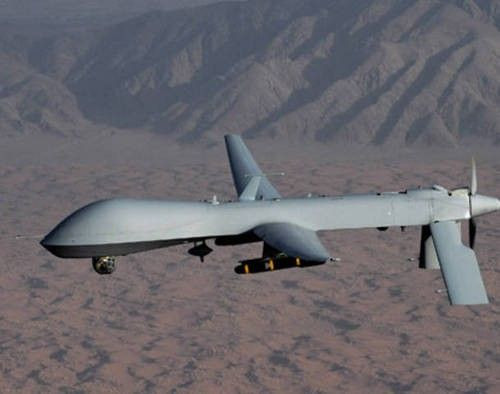Drones Strikes Traumatizing Pakistani Civilians: US Report

U.S. unmanned drone strikes have traumatized civilians in Pakistan and have done little to reduce the activities of militants that they are designed to target, according to a joint academic report from New York University Law School and Stanford University.
The strikes (which have long enraged Pakistani authorities) have also wounded or killed rescue teams seeking to treat the casualties of earlier launches.
While some prominent al Qaeda and Taliban figures (including al Qaeda official Abu Yahya al-Libi in June) have died under drone missile fire, the probes have apparently also killed hundreds of innocent civilians, not only in Pakistan’s northwest tribal regions, but also in Yemen and Afghanistan.
“Real threats to U.S. security and to Pakistani civilians exist in the Pakistani border areas now targeted by drones. It is crucial that the U.S. be able to protect itself from terrorist threats and that the great harm caused by terrorists to Pakistani civilians be addressed,” the report, called Living Under Drones, conceded.
“However, in light of significant evidence of harmful impacts to Pakistani civilians and to U.S. interests, current policies to address terrorism through targeted killings and drone strikes must be carefully reevaluated,” the report cautioned.
The report reveals that most of the militants who have been killed by drones were low-level officials, not senior commanders.
Indeed, just prior to the report’s release, nine Taliban members were reportedly killed by drones in North Waziristan, Pakistan.
Exact data on the number of casualties is impossible to ascertain since the U.S. government does not comment on drone strikes and regions they are deployed in are typically remote and inaccessible to media.
Citing data from the Bureau of Investigative Journalism, an independent journalist organization, the report suggests that up to 881 civilians (including 176 children) have died from drone strikes between 2004 and 2012 in Pakistan.
Up to 3,325 people in Pakistan were killed by those strikes.
One of the deadliest drone expeditions killed more than 40 people in North Waziristan in March 2011, including four militants, but also dozens of local traders and residents.
“This report does not provide a confirmed death toll for civilian victims of drone strikes,” commented Orla Guerin, a BBC correspondent. “No one could. First-hand reporting from the scene of a strike is all but impossible.”
Guerin added that foreign reporters cannot enter Pakistan's tribal belt without permission from the army.
“The areas targeted by drones are often under militant control, making access difficult even for local journalists,” she noted. “Civilians killed by drones can be the forgotten, invisible dead.”
Last week, Pakistani President Asif Ali Zardari again demanded that the U.S. cease its drone strikes in his country, during talks with U.S. Special Envoy to Afghanistan and Pakistan Marc Grossman.
Zardari “reiterated his call for an end to the drone attacks, terming them counterproductive in the fight against militancy and in the battle of winning hearts,” his spokesman said. “We need to discuss alternatives on the question of drone attacks.”
Voices outside of Pakistan have also criticized the drone program, including U.N. Human Rights Commissioner Navi Pillay, who has questioned their legality.
However, both U.S. President Barack Obama and Secretary of Defense Leon Panetta have defended the practice as a necessary deterrent to terrorism.
The NYU-Stanford study disputes that.
"In the United States, the dominant narrative about the use of drones in Pakistan is of a surgically precise and effective tool that makes the U.S. safer by enabling 'targeted killings' of terrorists, with minimal downsides or collateral impacts. This narrative is false," the report stated. "Publicly available evidence that the strikes have made the U.S. safer overall is ambiguous at best."
“U.S. drone strike policies cause considerable and under-accounted for harm to the daily lives of ordinary civilians, beyond death and physical injury. Drones hover 24 hours a day over communities in northwest Pakistan, striking homes, vehicles and public spaces without warning," the report also lamented.
“Their presence terrorizes men, women and children, giving rise to anxiety and psychological trauma among civilian communities. Those living under drones have to face the constant worry that a deadly strike may be fired at any moment and the knowledge that they are powerless to protect themselves.”
© Copyright IBTimes 2024. All rights reserved.




















